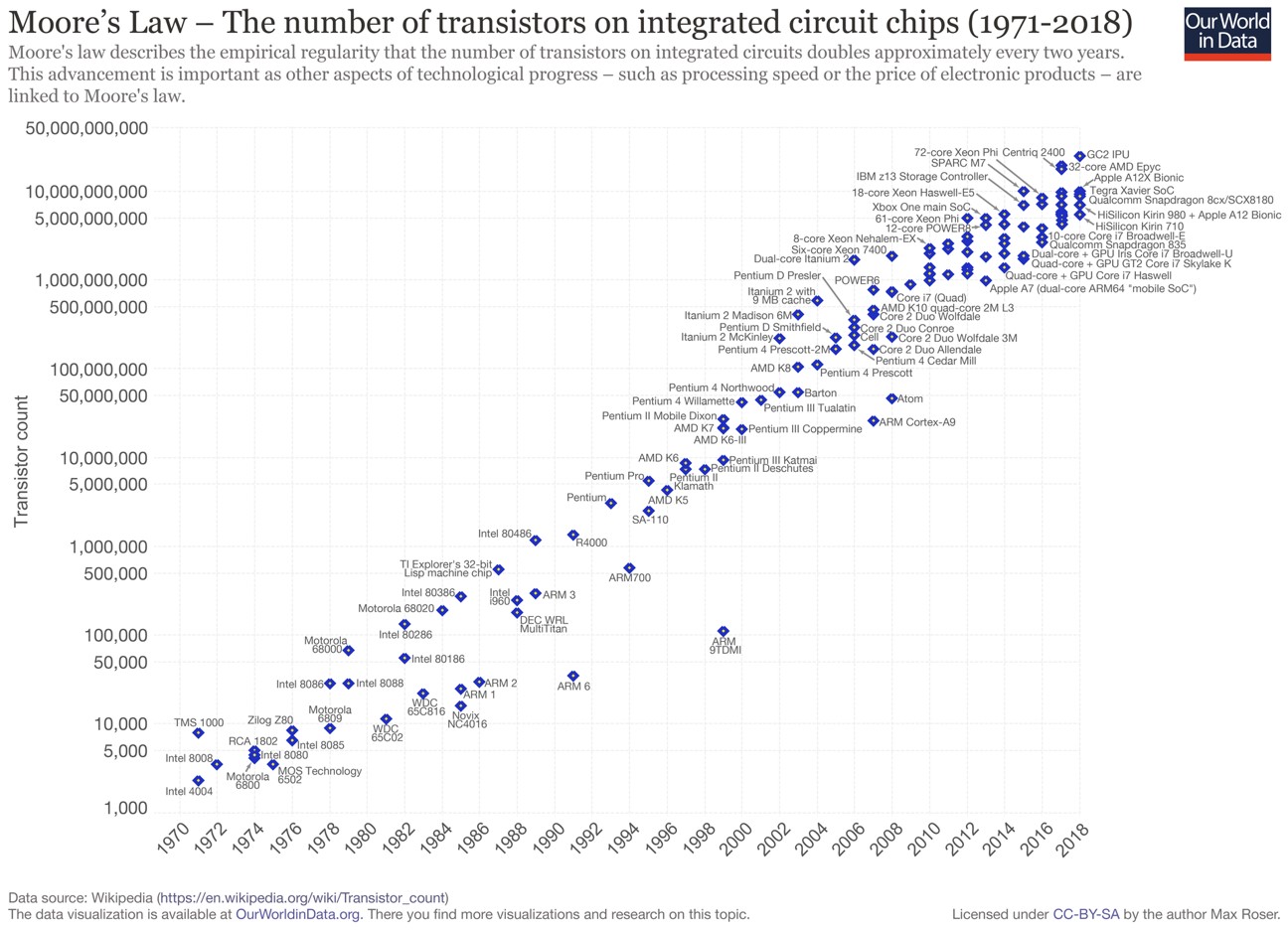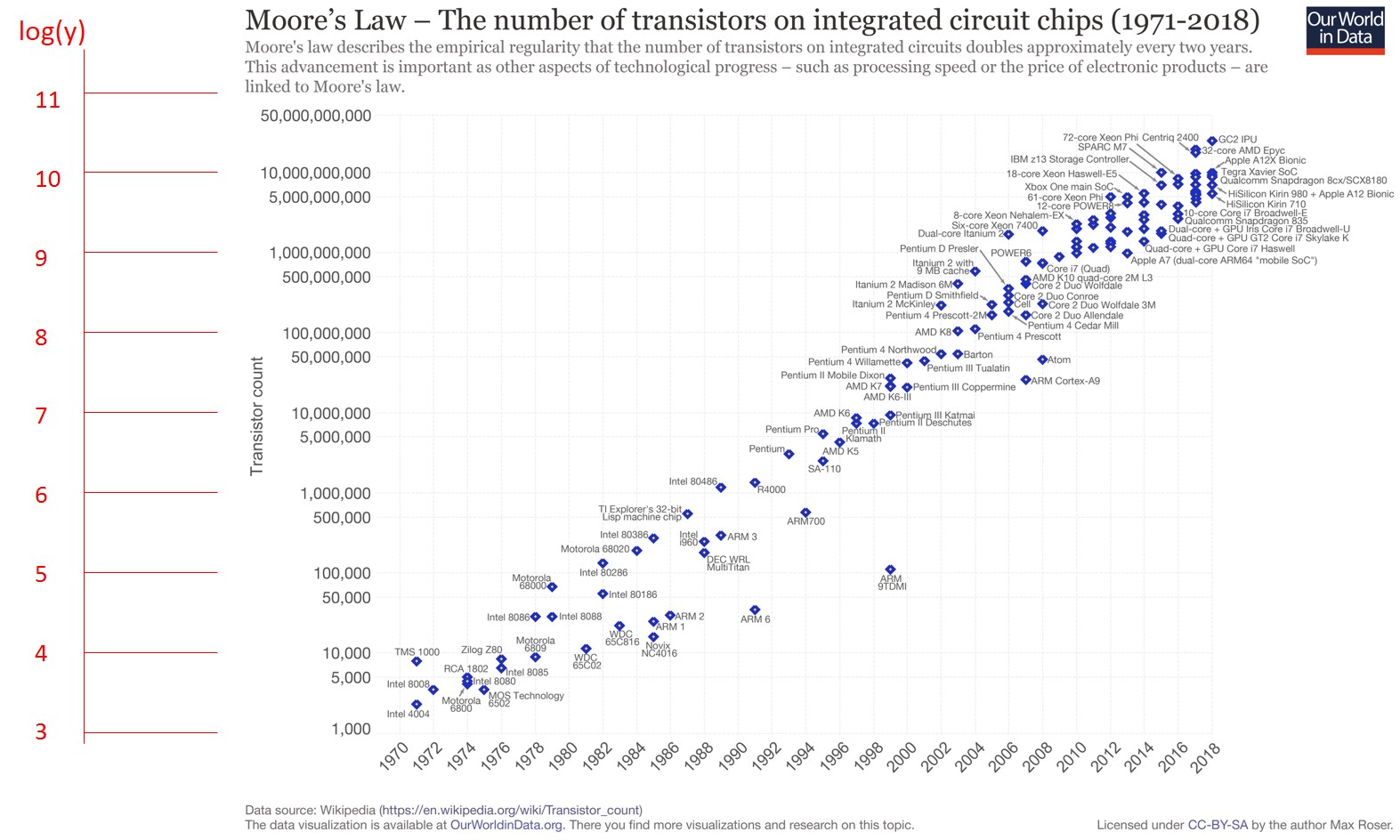Southern New Hampshire University Week 3 Use of the Moore Law Questions
Hint: The chart is taken from https://ourworldindata.org/technological-progress.
From the chart, estimate (roughly) the number of transistors per IC in 2012. Using your estimate and Moore’s Law, what would you predict the number of transistors per IC to be in 2040?
In some applications, the variable being studied increases so quickly (“exponentially”) that a regular graph isn’t informative. There, a regular graph would show data close to 0 and then a sudden spike at the very end. Instead, for these applications, we often use logarithmic scales. We replace the y-axis tick marks of 1, 2, 3, 4, etc. with y-axis tick marks of 101 = 10, 102 = 100, 103 = 1000, 104 = 10000, etc. In other words, the logarithms of the new tick marks are equally spaced.
Technology is one area where progress is extraordinarily rapid. Moore’s Law states that the progress of technology (measured in different ways) doubles every 2 years. A common example counts the number of transitors per integrated circuit. A regular y-axis scale is appropriate when a trend is linear, i.e. 100 transistors, 200 transistors, 300 transistors, 400 transistors, etc. However, technology actually increased at a much quicker pace such as 100 transistors,.1,000 transistors, 10,000 transistors, 100,000 transistors, etc.
The following is a plot of the number of transistors per integrated circuit over the period 1971 – 2008 taken from https://ourworldindata.org/technological-progress (that site contains a lot of data, not just for technology). At first, this graph seems to show a steady progression until you look carefully at the y-axis … it’s not linear. From the graph, it seems that from 1971 to 1981 the number of transistors went from about 1,000 to 40,000. Moore’s Law predicts that in 10 years, it would double 5 times, i.e. go from 1,000 to 32,000, and the actual values (using very rough estimates) seem to support this.

The following is the same plot but with the common logarithm of the y-axis shown. You can see that log(y) goes up uniformly.

Questions to be answered in your Brightspace Discussion:
Part a: The number of transistors per IC in 1972 seems to be about 4,000 (a rough estimate by eye). Using this estimate and Moore’s Law, what would you predict the number of transistors per IC to be 20 years later, in 1992?
Prediction =
Part b: From the chart, estimate (roughly) the number of transistors per IC in 2012. Using your estimate and Moore’s Law, what would you predict the number of transistors per IC to be in 2040?
Part c: Do you think that your prediction in Part b is believable? Why or why not?
This is all the material that you will need. Please let me know if you have any questions.